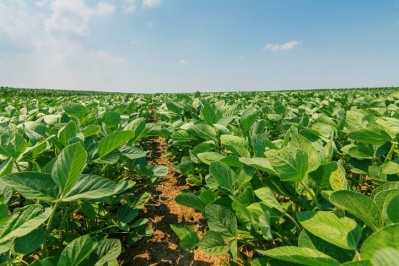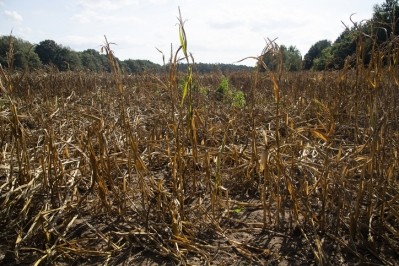Study addresses key challenges in expanding the supply of organic grain in the US

The US Organic Grains Collaboration, a raft of industry players seeking to address the limited supply of domestically raised organic grains, and improve organic grain and feed production, has released a report, US Organic Grain – How to Keep it Growing, developed in partnership with the Organic Trade Association (OTA).
Despite growth in the US organic sector, a bottleneck remains in the expansion of organic grain production, the authors of that publication wrote.
The domestic production of organic soybeans and grains has not kept pace with the demand increase, they said. “The gap between supply and demand can be attributed to the increase in demand from the feed sector.”
Organic grain production is growing, however not at a rate to meet the organic livestock industry needs, they noted.
“From 2008 to 2016, US production of organic corn, soybeans, wheat, oats, and barley grew from 626,000 to 765,000 acres – a growth of 22% over the eight-year period. Over a similar period, the US organic livestock products industry – including dairy, meat, and eggs sold from farms to first handlers – increased from $1.2bn to $3.3bn, nearly 300% growth.”
In 2016, production of organic corn, soybeans, wheat, oats and barley generated about 46m bushels, according to the report. Five states – Montana, Iowa, Minnesota, Wisconsin and Wyoming – accounted for about 39% of production with 17 other states each producing at least 1% of organic grain acreage.
Reliance on imports
To fill the demand gap, organic livestock producers often rely on imported organic feeds, they said. The overall value of imported soybeans and feed grains grew from $42m in 2011 to $401m in 2016 – and import sales exceed domestically produced feed crops.
Additionally, imported organic grains can be less expensive than domestically produced organic feed, they said. However, there also have been some questions about verifying certification of imported feeds.
“Over-reliance on imported organic grain and soybeans is both a missed opportunity for the US farmer and a weakness recognized by all the major components of the supply system,” the authors said.
There remains a higher unit price for organic feed crops than conventionally produced versions, although the premium between organic and conventional corn has narrowed slightly over time, they said. The net margin for organic crops also tends to be higher than conventional production.
However, the overall cost of organic production per bushel for established organic producers also remains higher than it does for conventional crops when all production expenses are considered, they said.
“Since organic producers tend to be lower in scale, their overall per acre costs are higher, and because they have lower yields, their per unit cost also tends to be higher,” they said.
The processes involved in organic production also tend to require more time and effort, which raises the cost for operation and labor, they added.
Transition period risk
Currently, there are three main challenges for US farmers wanting to grow organic feed and food grains, the report highlights. These include the fact that farm management resources are lacking; the risk from the high cost of transition to organic production and uncertain market response following transition; as well as the need to improve and maintain soil fertility and weed control for long-term yield optimization, they said.
It can be a challenge to find crop advisors versed in organic production as traditional extension programs may not support “adaptive management approaches,” they said.
Although management concerns tended to be consistent for producers, adaptive management practices may need to address more regionally specific issues.
There also is no centralized database of information for producers to access organic resources by region and topic, they added.
The transition period for feed crop and grain producers lasts 36 months following the last use of a non-approved substance, the report authors said. During the transition process, producers face higher production costs stemming from organic production practices but cannot earn higher prices linked to certified products.
While there also are some solutions being proposed to address top concerns and support the expansion of domestic feed grain production, they said. There needs to be “coordinated industry assistance” provided.
Suggestions to address the three challenges include the use of long-term forward contracts, they said. These could be a way to support producers through the transition process and allow producers to manage price volatility.
One organic farmer’s story
Organic production provides a way for new producers to enter the field, said Doug Crabtree, co-owner of Vilicus Farms, and member of the OTA advisory board. However, it also requires different strategies and thinking than conventional production.
“A critique of what’s wrong with farming is that people are far too tied, or committed, to doing things the way they have always been doing them or how previous generations did them,” he told FeedNavigator.
Since 2009, he has expanded the acres in production at Vilicus from about 1,200 to more than 9,000, he said.
Although coming to the organic sector with a background in conventional production, there was an understanding that there had to be “a better way” to farm, he said of why he was interested in the organic sector. That included looking for a “better and more reliable market.”
“We don’t put anything in the ground until we know where it’s going,” he said of one process that has been different in organic production. “We forward contact every acre.”
Getting price support
Developing relationships within the organic market can help establish those long-term contracts, said Crabtree. “What we’ve tried to do is [when] we know we’ve got two challenging years is asking the buyer for two years [of price support] and then offer three years of the organic crop at a lower price,” he added regarding navigating the transition period.
“In a place where they can grow feed crops more productively, these livestock entities should be developing direct relationships with growers with long-term risk-sharing relationships,” he added.
A second step would be to develop markets for alternative crops that can be used in feed grain rotations to limit weed challenges and improve soil health, the report authors said. “To add such crops to their rotations, farmers need more consistent market signals to support their inclusion in rotation with higher value crops,” they added.
“Without markets for weed suppressing and soil-building rotation crops, farmers are less likely to manage more diverse rotations to address future production challenge,” they said. “To achieve scale, coordination between feed and food markets that can share in the benefit of long-term organic productivity is needed.”
Establishing contractual agreements throughout the production chain can be one way to help share risk, improve security and meet the needs for multiple stakeholders, added Crabtree.
“There are things we’d like to grow more of that don’t seem to be well supported in the market,” he said. “We’re absolutely unwilling to put something in the ground unless there’s a market for it.”
“We grow 15+ crops every year and add on to that cover crops and green manures,” he added regarding ways to improve soil health. The diversity of production means fewer inputs are needed to address pest or weed control and soil fertility.
There also is a need for improved organic literacy within extension programs and crop consultants and to establish new ways to share information regarding crop production practices, the report authors said. Producers could benefit from a “modern, easy to navigate resource” to provide information.










